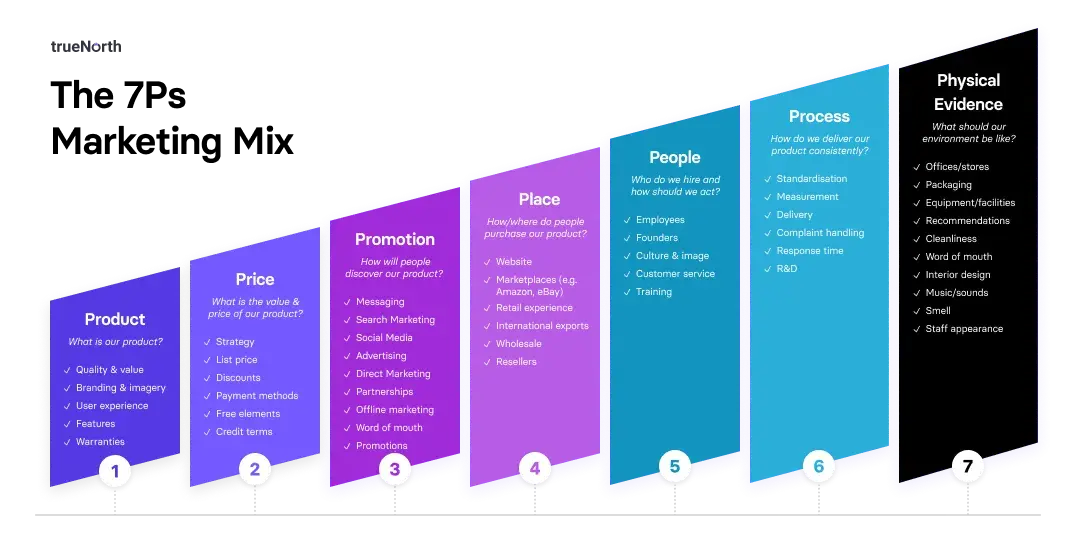Introduction to Concept Of Marketing :-

Marketing is the process of creating, communicating, delivering, and exchanging offerings that have value for customers, clients, partners, and society at large. It is a broad discipline that encompasses a wide range of activities, from product development to market research to sales and customer service.
Objective of Marketing :-
The objective of marketing is to create value for customers and achieve organizational goals by effectively meeting customer needs and desires. Marketing activities are aimed at generating awareness, attracting and retaining customers, increasing sales, and building strong brand equity. Here are the key objectives of marketing
1. Customer Satisfaction

Marketing aims to understand customers' needs and preferences and deliver products or services that fulfill those requirements. By providing superior value and exceptional customer experiences, marketing strives to satisfy customers and build long-term relationships.
2. Market Share and Growth

Marketing seeks to capture a significant share of the market by effectively positioning products or services, differentiating them from competitors, and developing targeted marketing strategies. By increasing market share and driving growth, organizations can achieve a sustainable competitive advantage.
3. Brand Building

Building a strong brand is a fundamental objective of marketing. Marketing activities focus on creating brand awareness, enhancing brand reputation, and establishing a positive brand image in the minds of customers. A strong brand presence leads to increased customer loyalty and competitive advantage.
4. Profitability

Marketing plays a crucial role in driving profitability for organizations. By effectively pricing products or services, identifying target markets, and implementing cost-effective promotional strategies, marketing aims to generate sales revenue and achieve desired profit margins.
5. Market Expansion:

Marketing objectives often include expanding into new markets or reaching new customer segments. Through market research, analysis, and strategic planning, marketing aims to identify untapped opportunities, develop market entry strategies, and expand the customer base.
6. Customer Retention and Loyalty

Retaining existing customers is more cost-effective than acquiring new ones. Marketing focuses on building customer loyalty by providing excellent customer service, personalized experiences, and loyalty programs. Repeat business and positive word-of-mouth recommendations are crucial for long-term success
7. Competitive Advantage

Marketing strategies aim to establish a competitive advantage by differentiating products or services from competitors. Effective marketing helps organizations communicate their unique value proposition and gain a favorable position in the market, ensuring a sustainable competitive advantage.
Overall, the objective of marketing is to create customer value, drive business growth, build strong brands, and maintain a competitive edge in the marketplace. By aligning marketing activities with organizational goals, marketing teams contribute to the overall success and profitability of the business
( Find your burning business problem's solution here... )
Introduction to 7P’s Of Marketing :-
In the realm of marketing, it is crucial for businesses to develop effective strategies that drive success and growth. The 7 P's of marketing provide a framework to analyze and optimize various aspects of a company's marketing mix. These P's encompass every element of a product or service, from its conception to its promotion and beyond. In this blog post, we will delve into each of the 7 P's, exploring their significance and how they contribute to a successful marketing campaign.
1. Product:
The product is a fundamental component of any marketing strategy, encompassing more than just its physical form. It comprises elements such as design, packaging, quality, branding, and intangible attributes. A well-designed product that effectively meets the needs and desires of customers can provide a competitive advantage in the market. For example, Apple's iPhone stands out not only for its sleek design and advanced features but also for its user-friendly interface and seamless integration with other Apple products.
In addition to the physical aspects, factors like warranty, usefulness, and convenience contribute to customer satisfaction and loyalty. For instance, Tesla's electric vehicles offer not only cutting-edge technology and impressive performance but also longer warranty periods and convenient charging infrastructure. This combination of features enhances the overall customer experience and strengthens brand loyalty.
By focusing on developing products that align with customer preferences, deliver superior quality, and provide added value, businesses can differentiate themselves from competitors and build a loyal customer base.
( Find your burning business problem's solution here... )
2. Price:

Pricing strategy is a crucial element in determining the success of a product in the market. Businesses must consider several factors when setting the right price. First, production costs need to be taken into account to ensure that the price covers expenses and allows for a reasonable profit margin. Second, the target market plays a significant role in determining pricing. Understanding the purchasing power and price sensitivity of the target audience helps in setting a competitive and attractive price point.
Competition analysis is another crucial factor in pricing decisions. Assessing the prices of similar products in the market enables businesses to position their offering strategically. Skimming pricing is often employed for new and innovative products, where a high initial price is set to capitalize on early adopters' willingness to pay a premium. Over time, the price is gradually lowered to attract a broader customer base.
Psychological factors also influence customers' purchasing decisions. Perception of value, brand image, and affordability all play a role in how customers perceive a product's price. Effective pricing strategies take into account these psychological costs to create perceived value and align pricing with customers' expectations.
By considering production costs, target market dynamics, competition, and psychological factors, businesses can set prices that maximize profitability, maintain competitiveness, and resonate with customers' perceived value.
( Find your burning business problem's solution here... )
3. Promotion:

Promotion is a vital component of marketing that aims to create awareness and generate interest in a product or service. It encompasses various strategies and tactics to effectively reach and engage the target audience. Advertising, which involves paid media placements, is a common form of promotion. It can be done through television, radio, print, online platforms, and social media channels.
Public relations (PR) activities, such as press releases, media relations, and events, help build a positive brand image and generate favorable publicity. Sales promotions, including discounts, coupons, contests, and loyalty programs, incentivize customers to make a purchase and encourage repeat business.
Personal selling involves direct communication between a salesperson and potential customers to address their specific needs and showcase the product's benefits. This form of promotion is particularly effective for complex or high-value products.
To maximize return on investment (ROI), businesses can collaborate withinfluencers, industry partners, or complementary businesses. Leveraging their existing audience and credibility can amplify the reach and impact of promotional efforts.
Effective promotion strategies increase brand awareness, build familiarity, and ultimately drive sales by capturing the attention and interest of the target audience. By utilizing a mix ofadvertising, PR, sales promotions, and personal selling, businesses can create comprehensive and impactful promotion campaigns.
4. Place:

The "place" element in marketing refers to the distribution channels used to bring a product or service to customers. It involves selecting the most appropriate channels that provide convenient access for the target audience. This can include direct sales, retail stores, e-commerce platforms, wholesalers, or a combination of these.
The importance of place in marketing lies in ensuring that the product is available to customers when and where they need it. Convenience and accessibility are key factors that influence purchasing decisions. By strategically choosing distribution channels, businesses can reach their target market effectively and provide a seamless buying experience.
The location of distribution points plays a crucial role in meeting customer expectations. Retail stores and e-commerce platforms need to be conveniently located or easily accessible online. Additionally, understanding customer preferences, such as their preferred shoppingchannels or delivery options, helps in tailoring the distribution strategy to align with their needs.
Effective place strategies also consider factors like inventory management, transportation logistics, and supply chain efficiency. Seamless distribution processes result in timely product availability, reduced costs, and improved customer satisfaction.
By carefully considering the "place" element, businesses can ensure that their products or services are accessible to customers in the right locations and through the most suitable channels, ultimately enhancing customer experience and maximizing sales opportunities
( Find your burning business problem's solution here... )
5. People:
People play a crucial role in the marketing mix, both within the organization and as customers. The employees who directly interact with customers have a significant impact on their overall experience and perception of the brand. It is essential for businesses to invest in training and development to ensure that their staff is knowledgeable, courteous, and capable of delivering excellent customer service. Well-trained employees can effectively communicate the brand's values, address customer inquiries, and provide personalized assistance, thereby enhancing customer satisfaction and loyalty
Understanding customers' needs, preferences, and behavior is also vital for effective marketing. By conducting market research and analyzing customer data, businesses can gain valuable insights into their target audience. This information allows for the development of targeted marketing strategies, tailored product offerings, and personalized messaging that resonates with customers. It enables businesses to meet customers' expectations, anticipate their needs, and create positive experiences, fostering long-term relationships.
The importance of people in marketing cannot be overstated. They are the driving force behind delivering exceptional customer experiences and building strong connections with the target audience. By focusing on employee training and understanding customer behavior, businesses can optimize their marketing efforts and achieve sustainable success.
6. Process:

Process refers to the series of procedures, systems, and workflows that enable the smooth delivery of a product or service. It plays a crucial role in marketing as itensures consistency, efficiency, and customer satisfaction throughout the customer journey.
A well-defined process is essential for several reasons. First, it enables businesses to maintain consistency in delivering their products or services. Consistency builds trust and reliability, which are crucial for establishing strong customer relationships. Second, an efficient process minimizes errors, delays, and resource wastage, leading to cost savings and improved productivity. This efficiency positively impacts the overall customer experience.
From order processing to after-sales support, each step in the process should be carefully designed to provide a seamless experience for customers. Effective processes streamline interactions, reduce friction points, and enhance customer satisfaction. This, in turn, leads to increased customer loyalty, positive word-of-mouth, and repeat business.
In marketing, the process is vital for delivering on the promises made through branding and promotional activities. It ensures that customers receive the value they expect from the product or service, which contributes to long-term success and positive brand reputation. By focusing on optimizing processes, businesses can differentiate themselves in the market and gain a competitive advantage.
( Find your burning business problem's solution here... )
7. Physical Evidence:

Physical evidence plays a significant role in shaping customers' perceptions of a product or service. It encompasses the tangible elements that customers interact with and experience. The physical environment, such as a retail store or office space, sets the stage for the customer's interaction and can create a lasting impression. For example, a well-designed and aesthetically pleasing store layout can enhance the overall shopping experience.
Packaging is another crucial aspect of physical evidence. It not only protects the product but also communicates the brand's image and quality. High-quality packaging can convey a sense of premiumness and attention to detail. For instance, luxury brands often invest in luxurious and visually appealing packaging to create an upscale brand perception.
Branding materials, including brochures, business cards, and promotional merchandise, also contribute to the physical evidence. These materials reflect the brand's identity and values, leaving a tangible reminder for customers.
Signage, both inside and outside a physical location, helps customers navigate and locate products or services. Clear and well-designed signage enhances convenience and customer experience.
Other sensory cues, such as music, lighting, and scent, can create a specific ambiance and atmosphere that aligns with the brand image. For instance, a spa may use calming music, dim lighting, and subtle scents to create a relaxing environment.
Overall, physical evidence in the form of the physical environment, packaging, branding materials, signage, and sensory cues can significantly impact customers' perceptions, influencing their purchasing decisions and fostering brand loyalty
The 7 P's of Marketing in 2023 :-

The 7 P's of marketing are still relevant in 2023, but they are evolving to meet the needs of the digital age. For example, the rise of social media has made it possible for businesses to reach a wider audience with their promotional messages. Additionally, the growth of e-commerce has changed the way that products are distributed.
As the marketing landscape continues to evolve, businesses need to be agile and adaptable. They need to be able to quickly adapt their marketing strategies to take advantage of new opportunities and trends.
How to Use the 7 P's of Marketing :-

The 7 P's of marketing can be used to develop and implement effective marketing strategies. The following steps can help businesses get started :-
1. Analyze the target market. The first step is to understand the target market. What are the needs and wants of the target market? What are the customer's pain points?
2. Define the product. The next step is to define the product. What are the features and benefits of the product? How does the product solve the customer's pain points?
3. Set the price. The price is the amount of money that customers pay for the product. The price should be set based on the cost of production, the competition, and the perceived value of the product.
4. Develop a promotion strategy. The promotion strategy is the communication that a business uses to inform potential customers about its products. The promotion strategy should be designed to reach the target market and generate interest in the product.
5. Choose the distribution channels. The distribution channels are the ways that a product is made available to customers. The distribution channels should be chosen based on the target market and the product's features.
6. Train the people. The people who interact with customers play a critical role in shaping customer perceptions of the brand and the customer experience. Businesses need to train their employees to provide excellent customer service.
7. Design the process. The process refers to the steps that customers go through to purchase and use a product. The process should be designed to be efficient and easy to use.
8. Create physical evidence. The physical evidence refers to the tangible elements that customers see, touch, and experience when they interact with a product or service. The physical evidence should be consistent with the brand and the product's features.
Understanding and implementing the 7 P's of marketing is essential for businesses aiming to achieve their marketing objectives. By carefully analyzing and optimizing each element - product, price, promotion, place, people, process, and physical evidence - companies can create a comprehensive marketing strategy that resonates with their target audience, builds brand equity, and drives long-term success. Remember, the 7 P's provide a holistic approach to marketing, ensuring all aspects work together to deliver a cohesive and impactful message to consumers.
Frequently Asked Questions
1. What is the importance of the 7 P's of marketing? The 7 P's provide a comprehensive framework for analyzing and optimizing various aspects of a company's marketing mix. They help businesses understand and address customer needs, differentiate themselves from competitors, build strong brands, and achieve marketing objectives.
2. How do the 7 P's contribute to a successful marketing campaign?Each of the 7 P's plays a crucial role in a marketing campaign. The product needs to meet customer needs and stand out from competitors. Pricing strategies must consider costs, competition, and customer perception. Promotion helps create awareness and generate interest. Place ensures convenient access to the product. People influence customer experiences and build relationships. Process ensures efficiency and consistency. Physical evidence shapes customer perceptions
4. How do the 7 P's align with digital marketing in 2023?The 7 P's have evolved to adapt to the digital age. For example, social media has opened up new promotional channels, and e-commerce has changed distribution methods. The principles of understanding the target market, defining the product, setting the price, developing a promotion strategy, choosing distribution channels, training people, designing the process, and creating physical evidence still apply but may be executed differently in a digital context.
5. How can businesses use the 7 P's to differentiate themselves?By analyzing and optimizing each element of the marketing mix, businesses can differentiate themselves from competitors. They can create a unique product, set a pricing strategy that offers value, develop innovative promotions, select convenient distribution channels, invest in employee training, design efficient processes, and create compelling physical evidence.
6. Are the 7 P's applicable to small businesses?Yes, the 7 P's are applicable to businesses of all sizes. Small businesses can benefit from understanding their target market, defining their product or service, setting competitive prices, promoting effectively, choosing appropriate distribution channels, training their staff, designing efficient processes, and creating appealing physical evidence.
7. How can businesses ensure they are effectively implementing the 7 P's?Effective implementation of the 7 P's requires thorough analysis, strategic planning, and continuous evaluation. Businesses should conduct market research, align their marketing activities with customer needs, regularly review and adjust their strategies, and gather feedback from customers to ensure their marketing efforts are effective and in line with the objectives.























